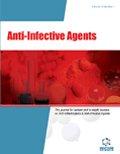Abstract
As the human race is still threatened by prospective avian flu endemics, new motivations and systematic approaches should be placed high on agenda in order to alleviate the potential losses of both human life and local economics. A balance and comprehensive measures between economy and the ecosystem of the endemic regions must also be considered. One of the top priorities in these explorations should be effective therapy for infected patients, including better uses and applications of vaccines and antiviral agents. In order to be better prepared for prospective avian flu epidemics, experimental and theoretical inquiry of therapeutic and technical feasibilities against avian viruses in humans deserve to be priority concerned, and extensive experimental and clinical exploitations of fatal pathogenesis of virus infection in human cells at genetic and cytological levels, are urgently needed. In this review, we address and discuss these important questions and review some important solutions for avian flu in future, including antiviral agents, virus vaccinations, Chinese medicine and genetic treatment of the disease.
Keywords: Avian flu, influenza virus, viral pathogenesis, viral treatment, antiviral agents, viral vaccine, human genome, viral genetic pathogenesis, traditional Chinese medicine, medicinal chemistry, neuraminidase inhibitors
Anti-Infective Agents
Title:Avian Flu; Pathogenesis and Therapy
Volume: 10 Issue: 2
Author(s): Da-Yong Lu, Ting-Ren Lu and Hong-Ying Wu
Affiliation:
Keywords: Avian flu, influenza virus, viral pathogenesis, viral treatment, antiviral agents, viral vaccine, human genome, viral genetic pathogenesis, traditional Chinese medicine, medicinal chemistry, neuraminidase inhibitors
Abstract: As the human race is still threatened by prospective avian flu endemics, new motivations and systematic approaches should be placed high on agenda in order to alleviate the potential losses of both human life and local economics. A balance and comprehensive measures between economy and the ecosystem of the endemic regions must also be considered. One of the top priorities in these explorations should be effective therapy for infected patients, including better uses and applications of vaccines and antiviral agents. In order to be better prepared for prospective avian flu epidemics, experimental and theoretical inquiry of therapeutic and technical feasibilities against avian viruses in humans deserve to be priority concerned, and extensive experimental and clinical exploitations of fatal pathogenesis of virus infection in human cells at genetic and cytological levels, are urgently needed. In this review, we address and discuss these important questions and review some important solutions for avian flu in future, including antiviral agents, virus vaccinations, Chinese medicine and genetic treatment of the disease.
Export Options
About this article
Cite this article as:
Lu Da-Yong, Lu Ting-Ren and Wu Hong-Ying, Avian Flu; Pathogenesis and Therapy, Anti-Infective Agents 2012; 10 (2) . https://dx.doi.org/10.2174/2211362611208020124
| DOI https://dx.doi.org/10.2174/2211362611208020124 |
Print ISSN 2211-3525 |
| Publisher Name Bentham Science Publisher |
Online ISSN 2211-3533 |
 19
19
- Author Guidelines
- Bentham Author Support Services (BASS)
- Graphical Abstracts
- Fabricating and Stating False Information
- Research Misconduct
- Post Publication Discussions and Corrections
- Publishing Ethics and Rectitude
- Increase Visibility of Your Article
- Archiving Policies
- Peer Review Workflow
- Order Your Article Before Print
- Promote Your Article
- Manuscript Transfer Facility
- Editorial Policies
- Allegations from Whistleblowers
- Announcements
Related Articles
-
NGR-based Strategies for Targeting Delivery of Chemotherapeutics to Tumor Vasculature
Anti-Cancer Agents in Medicinal Chemistry Neuroinflammation and Alzheimer's Disease: Implications for Microglial Activation
Current Alzheimer Research Association Between Seizures and Diabetes Mellitus: A Comprehensive Review of Literature
Current Diabetes Reviews QSAR Studies on Thiazole Derivatives as HCV NS5A Inhibitors via CoMFA and CoMSIA Methods
Letters in Drug Design & Discovery Bone Disease in Diabetes
Current Diabetes Reviews Glutamate and Psychosis Risk
Current Pharmaceutical Design Potential Applications for Using Stem Cells in Spine Surgery
Current Stem Cell Research & Therapy Depression in Sleep Related Breathing Disorder
Current Respiratory Medicine Reviews Fetal and Obstetric Manifestations in the Antiphospholipid Syndrome
Current Rheumatology Reviews The Association of Microglial Activation and Amyloid Reduction in APP+PS1 Transgenic Mice
Current Medicinal Chemistry - Immunology, Endocrine & Metabolic Agents Therapeutic Potential of Antileukotriene Drug-<i>Camellia sinensis</i> Extract Co-Formulation on Histamine Induced Asthma in Guinea Pigs
Current Drug Research Reviews Cell Therapy for the Treatment of Chronic Ischemic Heart Disease
Current Pharmaceutical Design Insights into the Biological Evaluation of Pterocarpanquinones and Carbapterocarpans with Anti-tumor Activity against MDR Leukemias
Anti-Cancer Agents in Medicinal Chemistry The Myometrium in Pregnant Women with Obesity
Current Vascular Pharmacology Potential Application of Dietary Polyphenols from Red Wine to Attaining Healthy Ageing
Current Topics in Medicinal Chemistry Tracing the Origins of COX-2 Inhibitors Structures+
Current Medicinal Chemistry Editorial (Thematic Issue: Advances in Peptides as Therapeutic Drugs)
Current Topics in Medicinal Chemistry Soluble CD40L and its Role in Essential Hypertension: Diagnostic and Therapeutic Implications
Cardiovascular & Hematological Disorders-Drug Targets Patent Selections
Recent Patents on Food, Nutrition & Agriculture Editorial [ A Novel Immunobiological Drugs in Dermatology Guest Editor: Neslihan ??endur ]
Anti-Inflammatory & Anti-Allergy Agents in Medicinal Chemistry


























